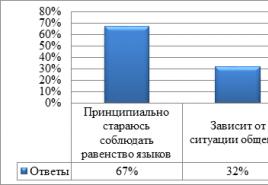Global warming flooding map. What will happen if the glaciers of Antarctica melt? World Wildlife Fund Forecast
The problem of climate change has become one of the urgent problems of modern climatology. Teams of scientists around the world are trying to predict the future of the planet using physical and mathematical models. It is worth noting that there is no consensus on the climate change scenario. It has now been established that there is a global rise in temperature on Earth, observations confirm the active melting of glaciers in Greenland and Antarctica. Most scientists agree that one of the main culprits of modern global warming is humanity, or rather its activities, thanks to which carbon dioxide and methane enter the atmosphere. An increase in its concentration leads to the so-called "greenhouse effect". However, there are groups of scientists who deny such a strong anthropogenic influence and put forward an opinion about the natural nature of climate fluctuations. In the distant past, the same processes were noted more than once, when the era of glaciation was followed by an era of relatively warm climate. The reasons for such variations are considered to be fluctuations in the inclination of the earth's axis, fluctuations in the Earth's orbit, powerful volcanic eruptions and changes in insolation. What will global warming lead to now and how will it affect humanity?
The editors of National Geographic magazine decided to check what will happen to the Earth if, under the influence of high temperatures, all the ice on the planet today melts?
All possible options were calculated and an interactive map was created on which the scenario of the development of events for each of the continents was recreated. 
Some development options:
1. Local changes in climatic and weather conditions. Many scientists predict a further increase in cataclysms such as floods, fires, droughts, hurricanes, and tornadoes. In addition, it is assumed that a local cooling will occur in some areas of the Earth.
2. Transformation of circulation in the oceans. The melting of glaciers will lead to a rise in the level of the World Ocean. According to some data, a decrease in water salinity will also cause a change in water circulation in the MO. One of the widely discussed issues in this connection remains the Gulf Stream. Scientists believe that the current will weaken significantly and stop heating Northern Europe.
3. Changes in flora and fauna, extinction of certain species of animals and plants. Every year the areas of the Arctic ice are decreasing, especially this is reflected in the coastal ice. As you know, these areas are the habitat of polar bears. The inability to hunt and get food for yourself will lead to the gradual disappearance of this species.
4. Changes in the quality of human life. All of the above aspects cannot but affect civilization. Thus, changes will be felt in many sectors, but primarily in such an area of \u200b\u200bthe economy as agriculture, where the climatic factor is one of the most influential.
Where it is not worth building a family house "for centuries" and buying a place in a cemetery in advance: cities and countries that will go under water as a result of climate change on Earth
Scientists from the world's leading scientific centers have been trying to predict the consequences of global warming for many years. The worst of them is the melting of glaciers, which will lead to an increase in the water level in the world's oceans and, as a consequence, flooding of a number of territories, including large cities.
The numbers are different every year - some say that in a few decades almost half of modern megacities will go under water.
Others are sure that neither we nor our children and grandchildren have anything to fear - humanity will feel serious consequences only after hundreds of years. And yet, the fear of a new global flood becomes more and more real every year - remember at least the large-scale flood in Europe, the flood in the Far East and the aftermath of Hurricane Sandy in New York.
The forecast of researchers of the Potsdam Institute for the Study of Climate Change (Germany) says: by 2100, the level of the World Ocean will rise by 0.75 - 1.5 meters due to the melting of continental ice.
In this case, in 100 years Venice will go under water, in another 50 (by 2150) - Los Angeles, Amsterdam, Hamburg, St. Petersburg, and there it is not far from other large cities.
But Russia, in this case, is threatened not so much by water as by refugees from other countries - according to scientists, if the water rises a meter, 72 million Chinese will have to change their place of residence. And where should they run, if not to Russia, what do you think?
The forecast of Russian scientists was set forth in the Climate Doctrine adopted by the Government and is perhaps the most optimistic in the world. But, nevertheless, the Minister of Natural Resources of the Russian Federation Yuri Trutnev, presenting the draft document, said that there is a real threat to our cities already in a hundred-year perspective.
Over the previous century, the water level rose by 10 cm, while with an increase in the ocean level by the same amount, by 2050-2070 a significant part of the territory of St. Petersburg and almost the entire Yamal may be flooded. With a growth of 20 cm, parts of the Arkhangelsk and Murmansk regions and a number of other territories of the country are at risk of flooding.
Antarctic Research Scientific Committee forecast: sea level could rise by 1.4 meters by 2100. Scientists did not calculate the consequences for the Russians, but if our experts consider even 10 cm a critical figure, imagine what will happen with an increase of almost one and a half meters!
The island states (the Maldives in the Indian Ocean or Tuvalu in the Pacific) will definitely go into oblivion, Calcutta will be flooded, and London, New York and Shanghai will have to spend about $ 15 billion each on flood protection (the Americans counted this figure for themselves) ... 100 million Asians, 14 million Europeans, will become refugees, and if the latter can still find a place for themselves in non-flooded areas, the former will most likely "rush" to Russia.
The forecast of the World Wildlife Fund (WWF) turned out to be rather vague - scientists do not give exact figures, but they say that by the end of the 21st century, the consequences of global warming will threaten the flooding of large cities, including St. Petersburg, Shanghai, Hong Kong and Calcutta.
Russian experts, however, commenting on the report said that they are ready to vouch for the safety of St. Petersburg with their heads - according to their calculations, the level of the world ocean, while maintaining the current rate, will rise by 30 centimeters in 100 years, and nothing threatens the city on the Neva. I wonder why, then, their colleagues who wrote the national doctrine are worried even about 10 cm?
National Geographic's forecast is one of the most pessimistic. True, it is designed for an indefinite period, but the rate of melting of glaciers is growing from year to year, so that a thousand years may well be reduced to a couple of centuries. According to scientists' calculations, with the complete melting of glaciers, the level of the world ocean will rise by about 65 meters, and the average temperature on the planet will rise from 14 to 26 degrees.
In this case, North America will flood Florida, the coast of the Gulf of Mexico and most of California. In Latin America, Buenos Aires, as well as coastal Uruguay and Paraguay will go under water. In Europe, London, Venice, the Netherlands and most of Denmark will be destroyed by the elements.
But most of all will suffer, scientists say, Russia, because of the flood of the Black and Caspian Seas. The entire Volga-Akhtubinskaya floodplain, together with Volgograd, as well as partially the Astrakhan, Rostov regions and the Republic of Kalmykia, will go under the water. In the north of Russia, St. Petersburg, Petrozavodsk and other smaller cities will fall into the flood zone.
In our time, more and more new cards appear. You will not surprise anyone with interactive and three-dimensional, or. Online maps allow any Internet user to virtually visit almost anywhere in the world, and understand what is there and how it all looks.
Without much difficulty, you can find a map of pollution, radioactivity, potential of solar and wind energy, the location of forests, roads and industrial plants.
One more map of the earth's surface created by the authors of the magazine National Geographic , who used data from scientists that if all the ice on Earth melted, the ocean level rise to 65 meters ... This should happen when the average annual temperature of the Earth rises by 12 degrees: from 14 at the moment to 26 degrees Celsius.
Over a hundred years, from 1913 to 2013, the average temperature rose by half a degree Celsius. Because of this, the ocean level rose by 20 centimeters.
 The volume of ice that is now on Earth, and covers about 10% of its surface, is 9 million cubic meters. So far, the melting was not very intense, because the heating of the planet was largely compensated by the increase in the heat content of the world ocean. But sooner or later this resource will exhaust itself, and the water will start heating up faster.
The volume of ice that is now on Earth, and covers about 10% of its surface, is 9 million cubic meters. So far, the melting was not very intense, because the heating of the planet was largely compensated by the increase in the heat content of the world ocean. But sooner or later this resource will exhaust itself, and the water will start heating up faster.
In addition, the process of ice melting is accompanied by water cooling and a decrease in air temperature. This is what explains cold snap in Europe ... If the ice melting in Greenland and the Arctic continues at the same rate, temperatures in Europe are forecast to drop further. In addition, further cooling of the water in the north diverts the warm Gulf Stream further and further from the shores of Europe, further exacerbating the situation.
It turns out against the background of global warming, the local cooling. But this is a consequence. When the ice has completely melted, the temperature will start to rise again, although this can only happen in a few decades.
Scientists report that if the melting continues as fast as it is now, then by 2040 there will be no ice at all in the Arctic Ocean. According to research carried out by NASA, until 2024, the process of ice melting will continue at the same pace as it is now, and then it will accelerate.
Melting in Antarctica , according to some forecasts, will go even faster than in the Arctic.
In light of such prospects, the possibility of a 65-meter rise in ocean level already in this generation seems real enough to draw attention to. And the map of the Earth's surface after all the ice has melted will help you decide whether you live in the right place - it clearly shows which areas will be flooded.
So take a look at these cards and think - maybe it's worth moving?






In addition, let's consider some more parameters that should be guided by when choosing a place of residence - from the point of view autonomy and survival in case of force majeure.
- Normal ecological situation: clean air, earth, no toxins and radiation.
- Availability of clean drinking water: underground water for a well, clean rivers.
- Average annual climate: most relevant for farming on your site.
- Closeness to the forest:for the preparation of firewood and building materials, as well as a forest - this is fresh air, mushrooms, berries, game, the opportunity to hide.
- Average annual wind speed and sunlight intensity: the possibility of using alternative energy.
- Fertile lands: although any soil can be made fertile - organic farming will help you.
- Distance from highways and roads: less likely to be attacked by marauders.
- Distance from cities: small settlements are better than large cities, and in any case, it is better to live on the outskirts of the city than in the center.
More detailed information can be found in the sections "All courses" and "Usefulness", which can be accessed through the top menu of the site. In these sections, the articles are grouped by topic into blocks containing the most detailed (as far as possible) information on various topics.
You can also subscribe to the blog, and learn about all new articles.
It does not take a lot of time. Just click the link below:
Antarctica is the least explored continent located in the south of the globe. Most of its surface is covered with ice up to 4.8 km thick. The Antarctic ice sheet contains 90% (!) Of all the ice on our planet. It is so heavy that under it the continent sank by almost 500 m.Today the world is observing the first signs of global warming in Antarctica: large glaciers are collapsing, new lakes appear, and the soil is losing its ice cover. Let's simulate the situation what will happen if Antarctica loses its ice.

How will Antarctica itself change?
Today the area of \u200b\u200bAntarctica is 14 107 000 km². If the glaciers melt, these numbers will be reduced by a third. The mainland will become virtually unrecognizable. There are numerous mountain ranges and massifs under the ice. The western part will definitely become an archipelago, and the eastern part will remain the mainland, although given the rise of oceanic waters, it will not hold this status for a long time.
 This is what Antarctica will look like. The current territory is outlined.
This is what Antarctica will look like. The current territory is outlined. At the moment, on the Antarctic Peninsula, islands and coastal oases, there are many representatives of the flora: flowers, ferns, lichens, algae, and recently their diversity has been gradually increasing. There are fungi and some bacteria, and the coast is occupied by seals and penguins. Already now, on the same Antarctic Peninsula, the appearance of tundra is observed, and scientists are sure that with warming there will be trees and new ones.
By the way, Antarctica holds several records: the lowest recorded temperature on Earth - 89.2 degrees below zero; the largest crater on Earth is located there; the strongest and longest winds.
Today there is no permanent population on the territory of Antarctica. There are only employees of scientific stations, and sometimes tourists visit it. With climate change, the former cold continent may become suitable for permanent human habitation, but now it is difficult to say with certainty - everything will depend on the prevailing climatic situation.
How will the world change due to melting glaciers?
Rising water levels in the oceans
So, scientists calculated that after the ice sheet melted, sea \u200b\u200blevel will rise by almost 60 meters. And this is a lot and will be equated with a global catastrophe. The coastline will shift significantly, and the current coastal zone of the continents will be under water.
 The great flood awaits many heavenly corners of our planet
The great flood awaits many heavenly corners of our planet If we speak, then its central part will not suffer much. In particular, Moscow is located 130 meters above the current sea level, so the flood will not reach it. Such large cities as Astrakhan, Arkhangelsk, St. Petersburg, Novgorod and Makhachkala will go under the water. Crimea will turn into an island - only its mountainous part will rise above the sea. And in the Krasnodar Territory, only Novorossiysk, Anapa and Sochi will be flooded. Siberia and the Urals will not undergo too much flooding - basically, residents of coastal settlements will have to relocate.
 The Black Sea will grow - in addition to the northern part of Crimea and Odessa, Istanbul will also take over. Signed cities that will be under water
The Black Sea will grow - in addition to the northern part of Crimea and Odessa, Istanbul will also take over. Signed cities that will be under water The Baltics, Denmark and Holland will almost completely disappear. In general, such European cities as London, Rome, Venice, Amsterdam and Copenhagen will go under water along with all the cultural heritage, so while there is time, be sure to visit them and upload photos on Instagram, because your grandchildren are likely to do this already cannot.
It will be hard for the Americans, who will definitely be left without Washington, New York, Boston, San Francisco, Los Angeles and many more large coastal cities.
 What will happen to North America. Signed cities that will be under water
What will happen to North America. Signed cities that will be under water Climate
The climate will already undergo unpleasant changes that will lead to the melting of the ice sheet. According to ecologists, the ice of Antarctica, Antarctica and those that are on mountain peaks help maintain the temperature balance on the planet, cooling its atmosphere. Without them, this balance will be upset.
The influx of large quantities of fresh water into the world's oceans will surely affect direction of large ocean currents, which largely determine the climatic conditions in many regions. So it is not yet possible to say with certainty what will become of our weather.
 The number of natural disasters will increase significantly. Hurricanes, typhoons and tornadoes will claim thousands of lives.
The number of natural disasters will increase significantly. Hurricanes, typhoons and tornadoes will claim thousands of lives. Paradoxically, due to global warming, some countries will begin to experience lack of fresh water... And not only because of the arid climate. The fact is that the deposits of snow in the mountains provide vast territories with water, and after its melting, such a benefit will no longer exist.
Economy
All this will greatly affect the economy, even if the flooding process is gradual. Take the United States and China, for example! Like it or not, these countries have a very strong impact on the economic situation around the world. In addition to the problem of resettlement of tens of millions of people and the loss of their capital, the states will lose almost a quarter of production capacity, which will ultimately hit the global economy. And China will have to say goodbye to its huge commercial ports, which will reduce the flow of products to the world market at times.
How are things today?
Some scientists reassure us that the observed melting of glaciers is normal, because somewhere they disappear, and somewhere they are formed, and thus the balance is maintained. Others point out that there is still cause for concern and provide compelling evidence.

Not so long ago, British scientists analyzed 50 million satellite images of the Antarctic ice sheets and came to the conclusion that their melting is very rapid... In particular, the giant Totten glacier, the size of which is comparable to the territory of France, causes concern. The researchers noticed that warm salt waters were washing it away, accelerating its decay. According to forecasts, this glacier can raise the level of the World Ocean by as much as 2 meters. It is assumed that the Larsen B glacier will collapse by 2020. And he, by the way, is 12,000 years old.
According to the BBC, Antarctica loses a whopping 160 billion tons of ice a year. Moreover, this figure is growing rapidly. Scientists say they did not anticipate such a rapid melting of the southern ice.
By the way, the name "Antarctica" means "opposite the Arctic" or "opposite the north".
The most unpleasant thing is that myself the process of melting glaciers even more affects the increase in the greenhouse effect... The fact is that the ice sheets of our planet reflect some of the sunlight. Without this, heat will be retained in the Earth's atmosphere in large volumes, thereby increasing the average temperature. And the growing area of \u200b\u200bthe World Ocean, whose waters collect heat, will only aggravate the situation. In addition, a large amount of melt water also has a detrimental effect on glaciers. Thus, ice reserves not only in Antarctica, but throughout the entire globe, are melting faster and faster, which ultimately threatens big problems.
Conclusion
Scientists have very different opinions about the melting of the Antarctic ice sheet, but what is known for certain is that humans greatly affect the climate with their activities. If humanity does not solve the problem of global warming in the next 100 years, then the process will be inevitable.







